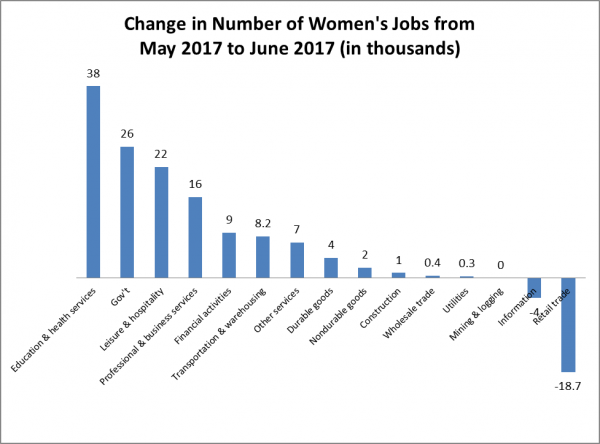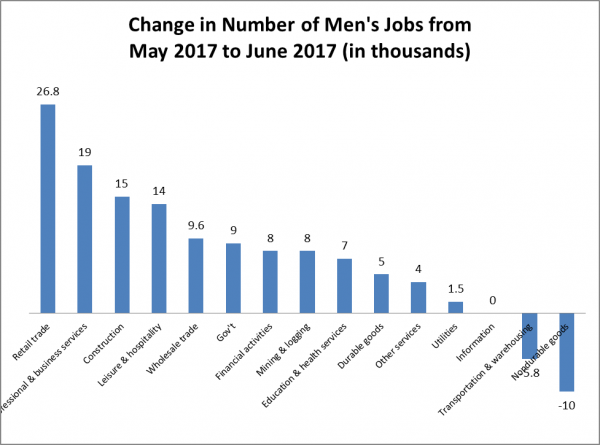Abortion rights, women of color, and LGBTQI+ people are under attack. Pledge to join us in fighting for gender justice.
Women Don’t Need Any Old Job – They Need Good Jobs

The U.S. added 222,000 jobs to the economy this month – about 48,000 more than was originally forecasted. And while many are calling that a success, we would be remiss if we didn’t tell you about the kinds of jobs those are because when it comes to job creation, not all jobs are created equal.
Of the 222,000 jobs added to the economy about half – 112,000 – went to women. And the quality of those jobs was mixed – some are decent paying jobs that provide benefits and are frequently covered by unions, while others leave something to be desired in terms of pay and access to benefits.

The education and health services sector added a little more than 1 in 3 women’s jobs to the economy last month. More than 1 in 6 of these workers belong to or are represented by a union, which has been shown to boost earnings and reduce wage inequality. People who work in these sectors earn about $742 per week and work an average of 32.2 hours, which translates to about $23 per hour. And while that could provide a decent living, this sector also includes many low-paying occupations that make it difficult to support a family, such as personal care aides, a job that pays a median hourly wage of just $10.54.
The leisure and hospitality sector was also a primary job creator in June – adding 22,000 jobs, or about 1 in 5 of the women’s jobs added to the economy last month. People who work in this sector work in jobs such as hotel clerks, waiters and waitresses, and lifeguards. Very few – less than 1 in 15 – belong to or are represented by a union. People in this sector earn about $332 per week and work an average of just 24.9 hours, which translates to a little more than $13 per hour. And research shows that women who work part-time have less access to benefits such as health care or paid time off.
Men also had a mixed bag; they gained jobs in the retail trade (26,800), professional and business services (19,000), and construction (15,000) sectors last month. People in retail trade worked an average of 30 hours per week, earned about $15.40 per hour and more than 1 in 11 belong to or are represented by a union. Workers in professional and business services and construction worked an average of 35.5 hours and 39.7 hours respectively – both considered full time and likely provide access to employer-provided benefits – and earned about $26 per hour. Fewer than 1 in 17 professional and business services workers belong to or are represented by a union while nearly 3 in 10 construction workers belong to or are represented by a union.

Bottom line? Women want to work – more women are in the labor force now than ever. They want to provide their families with financial security and create a better future for their children. So when you’re creating jobs, policymakers, make sure you’re thinking about the quality of those jobs.





